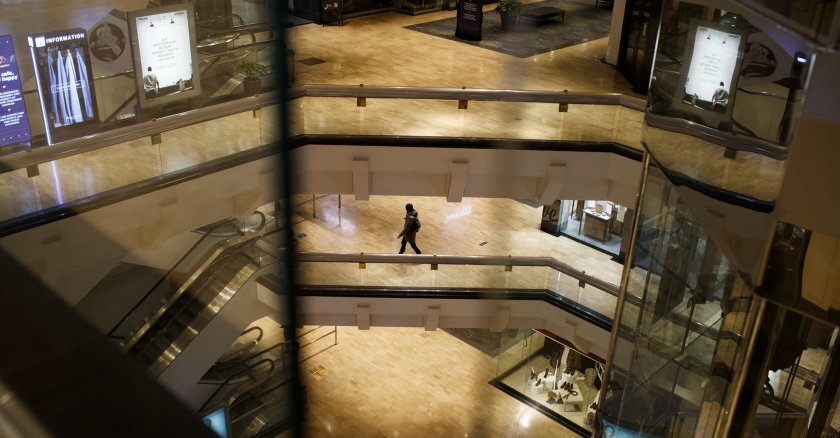In Brief:
Downtown areas with lots of residents, a mix of land uses and job types, and strong hospitality and leisure sectors are recovering from the pandemic more quickly than others, according to a new analysis.
The report, authored by the Center City District (CCD) in Philadelphia, compares 26 American downtowns using anonymized cellphone data, and tracking the presence of residents, workers and visitors against the pre-pandemic period. While painting a picture of downtowns in dramatically different stages of recovery, the authors insist the data show a general, if slow, trend toward recovery. And they argue that predictions of an urban “doom loop” have been both premature and far too gloomy.
Tracking Residents, Visitors and Workers
City leaders, planners and researchers have worried since the earliest days of the pandemic that it would inflict long-lasting damage on downtown districts. Many of their fears have come observably true, including the emptying out of office towers, high retail vacancy and low transit ridership in most places.
Other concerns, like upticks in downtown crime, have been less fleshed out, with researchers showing perceptions of crime spikes outpace the actual incidence of crime in downtown areas. Meanwhile, groups like the Center City District are using new, more granular data sets to understand what’s happening in their downtowns, and how they’re stacking up against others.
The data in CCD’s new report, called Downtowns Rebound: The Data Driven Path to Recovery, was provided by Placer.ai, a location analytics company. Placer and similar companies provide anonymized data from mobile phones showing who’s present in a certain area and how long they stay. As Governing reported earlier this year, many downtown business improvement districts and planning agencies have begun paying for the data to understand commuting patterns and downtown visitation trends.
The report defines downtowns as the densest job centers in the country. (It includes 26 “downtowns” in 25 cities because New York, according to this definition, has two: Midtown Manhattan and Lower Manhattan.) It tracks the varying rates of return for downtown residents, visitors and workers. Residents have been by far the fastest to return; resident populations are higher than they were in 2019 in all of the largest downtowns, except for San Francisco and Seattle, according to the report.
Workers have been much slower to return, with many white-collar workers continuing to work remotely. Even downtowns with the highest rates of worker recovery are well short of the pre-pandemic rates, and some, like San Francisco, Portland and Denver, are hovering just above 50 percent.

(Center City District Downtowns Report 2023)
“Industry mix really matters,” Levy said. “This to me was a huge takeaway. The structure of your downtown economy is a very big predictor of the rate of recovery.”
Vindicating the ‘Live-Work Downtown’
Levy is an archetypal downtown booster. He has led the Center City District since the early 1990s, and is often considered a pioneer of the modern business improvement district. At the end of the year he’s stepping down as CEO. Before presenting the new report to a Philadelphia audience, he took it to the International Downtown Association annual conference in Chicago.
Levy says the report vindicates efforts by many cities to establish “live-work” districts around their downtowns over the last few decades. Some evidence shows that the length of the commute is correlated with the return of office work: Residents who live within two miles of their jobs are returning to work more quickly in some cities. Those who live more than 10 miles from work are likeliest to still be working remotely. Having more residents, retail, entertainment and amenities downtown also increases vibrancy.
“Any street that is single use is the kiss of death,” he said.
Residents won’t save downtowns on their own, Levy says. Even with more cities building more housing in the urban core, there aren’t enough residents to replace the workers who have yet to return to the office. And those workers bring unique value to cities. White-collar jobs and blue-collar jobs rise and fall together in dense downtown areas. Cities need office workers back, Levy argues, but society more broadly needs office workers back in cities, too. Remote work could end up promoting more sprawl just at the moment when leaders are beginning to reckon with its social and environmental destructiveness.
“In the 1950s and ’60s we had incredibly cheap fuel in the United States, we had great subsidized mortgages, and we built incredibly successful suburbs that lots of white, middle-class people were able to move to,” he said. “What did they leave behind? Cities in abandonment, cities in ruin, cities without strong tax bases, cities with redlining, and so on. Why don’t we think about virtual work as digital suburbanization all over again? This is not smart growth.”
Related Articles














